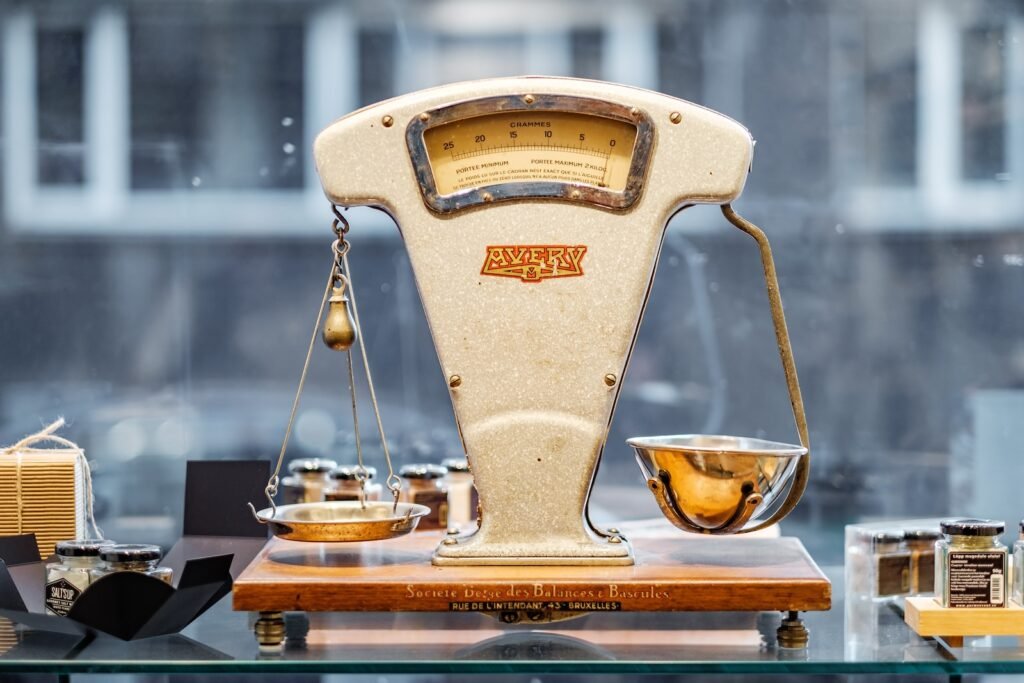This post seeks to answer two common questions about the disc golf pro tour (DGPT) points system. How do they work? AND Why do they Matter? I’ll break it down into simple terms and show you what you need to know. Let’s go!
I’ve gone deep into the weeds on this one and lived to tell the tale…
There’s a lot of confusion around how these Disc Golf Pro Tour points work, and why they even matter.
I’m going to break it down nice and simple. I’ll also show you where you can get more specific details if you want to wade into the weeds yourself.
Let’s get right into it…
What Are Disc Golf Pro Tour Points?

Basically, every pro player earns points based on eligible events that are played each season.
For every eligible event they complete, they earn points. The top 50 (for MPO and FPO) in any given event get more points (decreasing from 1st to 50th place) than 51st place and below. However, if you complete the event and finish below 50th, you still get some points (weighted accordingly).
Therefore, the better the player does in a given event, the more points they earn.
Next, let’s look into this weighting system. It makes sense that first place in a Major is worth far more than first place in a Silver Series Event. And the equation, as you’ll see, for figuring out points earned is pretty straight forward…
DGPT Tournament Point Weighting System.
Essentially, there are 3 tiers of tournaments for players to earn points and the number of points earned for a given place depends on how that event is weighted. Here are the 3 point categories.
Elite Series: It’s easiest to think of this as the baseline point system. In an elite series event, first place earns 100 points.

Elite Series+/Majors/Playoffs: These are weighted more! A first place in any of these events is worth 150 points. That’s a 1.5x multiplier (or 50% more) compared to Elite Series.
Qualified Silver Series/Euro Tour Events: These are weighted less. A first place in any of the eligible Silver Series or Euro Tour events is worth 50 points. That’s a .5x multiplier (or 50% less) compared to Elite Series point totals.
Let’s look now at how many events are eligible and how players accumulate points.
How Many DGPT Events Count For Points?
For pro players, it’s not as simple as just playing as many eligible events as possible to rack up as many points as you can.
There are certain restrictions for each classification of events. Let’s look!
Elite Series/Elite Series+: Typically, in a given year, there are 13 of these events (11 ES and 2 ES+). A player only gets their 8 best point totals from these 13 events.
Majors: There are 3 Majors in a year and a player gets their 2 best point totals from the 3 majors.
Playoffs: There are 2 designated “playoff” events and both of these count towards a players point totals. The MVP Open at Maple Hill is an example of one such “playoff” event.
Silver/PDGA Euro Tour: There are usually upwards of 15 eligible Silver/Euro Tour Events that are eligible but only your top 3 scores from these are included in your point totals.
Example Using The Perfect Season
Let’s pretend that a player played every event and finished first place each time. Not all the events would count towards their point totals, but there’s plenty of incentive, besides points, to win events.
In this scenario, the player that played every event and finished first would earn 1,650 points.
If they won all 13 Elite/Elite+ events only 8 would be eligible for points. Because the 2 Elite+ events count for more points you would use both of those (2 x 150 = 300 points) and the final 6 slots would be used on your Elite Series wins (6 x 100 = 600 points). That totals 900 points (300 + 600) for those 8 events.
If they won all 3 majors they could only use 2 of them for points. So 2 x 150 = 300 points.
If they won both playoffs that’s another 300 points (2 x 150).
And finally, if they won all of the Silver/Euro Tour Events it would only mean another 150 points. Only 3 of these events are eligible for points and a win is only 50 points (3 x 50 = 150).
Adding it all up you get 900 for Elite/Elite+, 300 for 2 of 3 majors, 300 for both playoffs and the 150 for the three eligible Silver Series/Euro Tour Events.
900 + 300 + 300 + 150 = 1,650 maximum points.
A frequent question that comes up is the differences, for points, in MPO vs. FPO. Let’s look at that next.
Differences in MPO vs. FPO

Generally, in a given event, the MPO field usually has more participants. There are still quite a few events for FPO where I see less than 50 participants.
Despite this, the point system is the same. First place in an Elite Series Event, for example, is worth 100 points for both winners.
So, you might find that a player in the FPO field with a similar skill level relative to the MPO player to have more points in general. However, because those two players don’t compete against each other in points, it all comes out in the wash.
The only real difference gets revealed in the next section on why these DGPT points even matter!
Why Disc Golf Pro Tour (DGPT) Points Matter
In essence, the points matter for two reasons…
Reason #1 – Tour Card Automatic Qualification – I wouldn’t know, but life as a professional disc golfer becomes a whole lot easier if you have your tour card. Easy registration for events in addition to some other perks make the Tour Card a valuable commodity.
The top 80 MPO players and the top 40 FPO players are automatically eligible for their tour card for the following year. These are determined by your point totals for the previous season. That’s a lot less hoops to jump through!
This is also one big difference between MPO and FPO (80 vs. 40) as it pertains to points right now.
Reason #2 – Qualification and Seeding for the Tour Championship – The Tour Championship happens at the end of the year and offers big purses and extra exposure for the players (32 MPO and 20 FPO (that’s the second major difference between divisions btw)) that qualify for each division, FPO and MPO.
Qualification for this event is first given to all the winners of any Elite, Elite+, Major, or Playoff (of which there are 18 total).
After that, the remaining spots are given to the players with the highest point totals.
In addition, point totals are the sole determinant of your seeding! That means the highest point scorer gets the 1-seed and will get byes and play the player with the lowest point total. This will, in theory, give them the easiest path to victory and the bounty of prizes that come with it.
Want My Opinion?
Well, since you asked for it, here it is!
This will not be a scorcher. All in all, I like the tournament in the end and think it makes for good viewing.
My only quibble is with how the middle class gets left out. If you are just grinding away and you finish in 77th for MPO and get your tour card that’s huge!
On the flipside, if you squeak into the tournament at the end, it can be a boon for your career.
But what about the player that doesn’t really worry about getting their card but also doesn’t really have much of a chance to get into the tourney?
For them, the points don’t mean a whole lot. They’re just kind of… there. I would like to see a way to make those points more important for all the players. If any of you have ideas I’d love to hear them!
Who Are The Current Points Leaders?
Any given season the points leaders can vary greatly.
For up to date standings on who the top FPO and MPO points leaders are, you can click on this DGPT link that should be up to date.
For complete points standings for all players, MPO and FPO, try this link from Udisc.
Other Posts to Check Out Before We Wrap Up!
- Lone Star Disc Has a Great Lineup for Beginners!

- The MVP Trail Disc – Should you Get it?

- The 3 Best Disc Golf Bags with Coolers For Any Budget!

- Best Disc Golf Misprints for Your Bag!

- Top 5 Fun Disc Golf Mystery Boxes!

- Top 5 Backpack Disc Golf Bags for 2025!

- 5 Best Disc Golf Cart Accessories!

- The Best Disc Golf Putter Pouch For Your Cart!

- Top Disc Golf Basket Lights For Night!

Disc Golf Pro Tour (DGPT) Points – In Summary
There you have it! That’s how Disc Golf Pro Tour Points are weighted by event, how many events are eligible for points, and why the points even matter.
For a lot of players getting their tour card makes these points invaluable. For others, it’s a ticket to a chance for big purses and great exposure. It remains to be seen if these points can have even more import and serve the “middle class” pro as well.
If you have ideas on how to make the points mean even more, post them in the comments!
In this post, I tried to stay out of the weeds. However, if you are looking to take more of a deep dive, be sure to check out this udisc post. It’ll show you what each place is worth for a given tournament, how ties are settled, and more!
I hope this helped you understand how the Disc Golf Pro Tour Points are allotted and why they matter. That, after all, was the whole point…
Thanks for reading! If you have any ideas you want to share on the Disc Golf Pro Tour (DGPT) points system, let us all know in the comments. Also, please consider subscribing to my monthly newsletter. There’s no spam, it’s free, and you are automatically and permanently entered into a raffle to win $50 gift cards to Infinite Discs.

